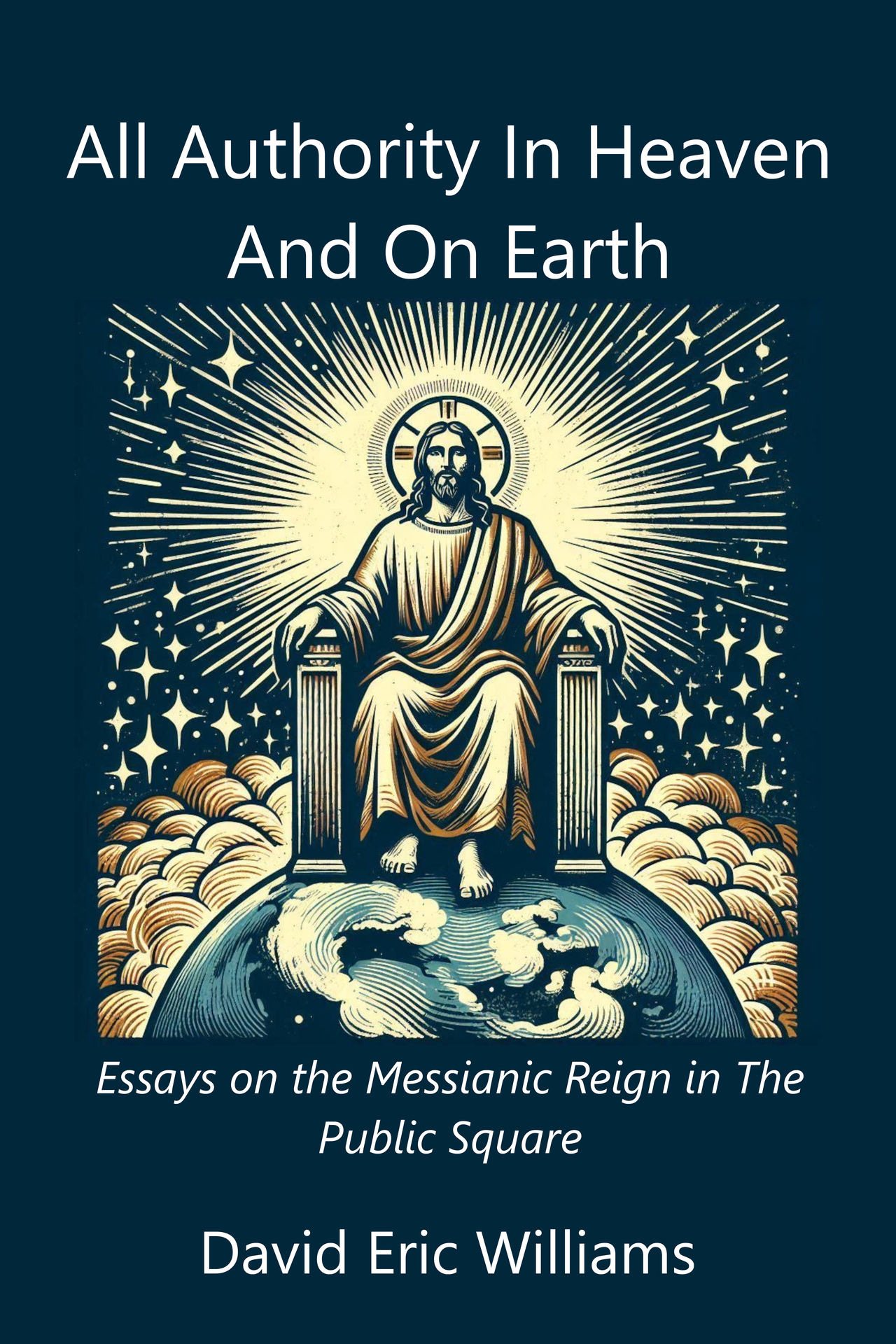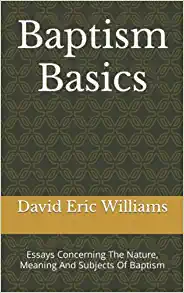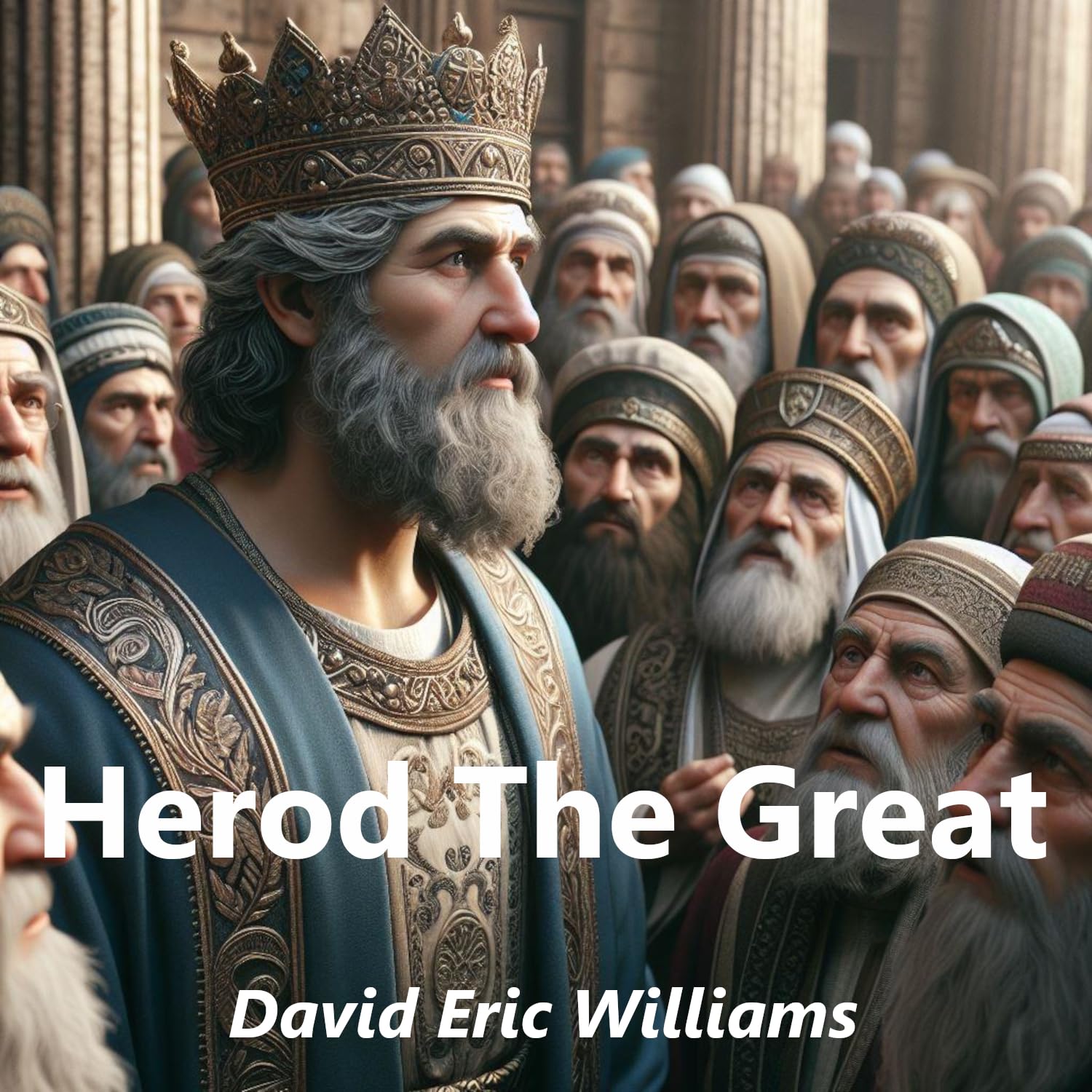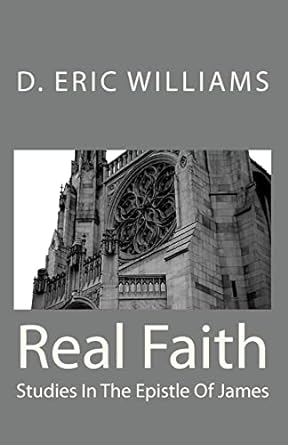The Virgin Birth
© 12.25.2019 By David Eric Williams
 The prophecy of Isaiah concerning the virgin (or young woman) giving birth to a child named Immanuel is one of the more difficult prophetic passages in the Old Testament.1 Indeed, the sign God provided to king Ahaz "has provoked endless controversy."2 However, a solution may be found in recognizing the nature of prophecy itself. We are in danger of missing Isaiah's point if we think too literally concerning a woman and her child. Instead, we must try to "think like a prophet." Moreover, we should understand the nature of the remnant motif and the corporate people of God as the woman or bride. Thus, a proposed interpretation of Isaiah 7:14 recognizes the corporate people of God as the young woman and "Immanuel" as the faithful remnant.
The prophecy of Isaiah concerning the virgin (or young woman) giving birth to a child named Immanuel is one of the more difficult prophetic passages in the Old Testament.1 Indeed, the sign God provided to king Ahaz "has provoked endless controversy."2 However, a solution may be found in recognizing the nature of prophecy itself. We are in danger of missing Isaiah's point if we think too literally concerning a woman and her child. Instead, we must try to "think like a prophet." Moreover, we should understand the nature of the remnant motif and the corporate people of God as the woman or bride. Thus, a proposed interpretation of Isaiah 7:14 recognizes the corporate people of God as the young woman and "Immanuel" as the faithful remnant.
Historical Background
Around 734 B.C., "a resurgent Assyria under Tiglath Pileser II" began a push westward and south toward the land of Israel.3 Under Tiglath Pileser II, Assyria became the dominate power in western Asia. In an effort to forestall the advance of the Assyrian armies, Rezin, king of Syria and Pekah, king of Israel joined forces against Tiglath Pileser.
These two kings launched a campaign against Ahaz and the kingdom of Judah. This action was taken to either force Ahaz to join their coalition or to unseat him and place "the son of Tabeel" on the Judean throne (Isaiah 7:6).4 Indeed, in the days of Jotham, father of Ahaz, "the LORD began to send King Rezin of Aram and King Pekah of Israel to attack Judah" (2 Kings 15:37).5 In fact, "King Rezin of Aram and King Pekah of Israel came up to attack Jerusalem. They besieged Ahaz but could not conquer him" (2 Kings 16:5). In this campaign, the allied forces of Syria and Israel inflicted heavy losses on Judah (2 Chronicles 28:5-8).
Context Of Isaiah 7-9
Chapters seven through nine of Isaiah's prophecy are a part of the book that carries the "theme of trust."6 The significance is found in the situation of Judah at the time. To Ahaz it seemed all was lost as his northern neighbors continued to attack his kingdom. While it was true that Syria and Israel had not succeeded in taking Jerusalem, it seemed that no other prize was beyond their reach. However, God instructed Isaiah to go to Ahaz and "Tell him to stop worrying. Tell him he doesn't need to fear the fierce anger of those two burned-out embers, King Rezin of Syria and Pekah son of Remaliah" (Isaiah 7:4). As a thoroughly pagan king (2 Kings 16:1-4), Ahaz resisted showing faith in Yahweh, perhaps feigning piety in his refusal7 (Isaiah 7:12).
Nevertheless, Isaiah delivered his prophecies as commanded. Though Ahaz refused to accept it, the prophet provided a sign of assurance that the reigns of kings Rezin and Pekah were near their conclusion (Isaiah 7:4-9). In the end, it was the righteous remnant of Judah who received Isaiah's prophecies of assurance and his call to trust in God.8
In the chapters under consideration, Isaiah acknowledges the crisis but also delivers a series of promises that centered around the coming of a son or sons. Chapter seven introduces Immanuel, "God with us." Chapter eight features Maher-shalal-hash-baz, a name meaning "swift is the booty, speedy is the prey."9 This name decreed that Syria and Israel were soon to be conquered and ransacked by Assyria. Chapter nine foretells the coming of a son who was to be called "Wonderful Counselor, Mighty God, Everlasting Father, Prince of Peace" a reference to the Messiah (Isaiah 9:6). It is clear that Isaiah intended to reach a crescendo in this series of prophecies. He assures the remnant that God will see them through the current crisis and then affirms a future hope for the people of God: the messianic ruler will one day come.
When Isaiah confronted king Ahaz, he did so in the company of his son named "only a remnant will return"10 (7:3). God directed Isiah to "go out to meet King Ahaz. You will find him at the end of the aqueduct that feeds water into the upper pool, near the road leading to the field where cloth is washed" (7:3). Ahaz was likely there to direct the securing of the water supply as preparation for an expected siege by Syria and Israel.11 Isaiah provided Ahaz with a word of assurance form God (7:4). In fact, God said the invasion would not happen; the two nations threatening Judah were no stronger than the weak men who ruled them (7:8-9).
Then, Isaiah instructed Ahaz to ask for a sign - any sign - as a proof of God's determination to do as he promised (7:10-11). Ahaz refused. He did so as a show of piety but his true motivation was a lack of trust in God.12 He would rather place his faith in Assyria (2 Kings 16:5-7, 2 Chronicles 28:16). At this point, Isaiah (in righteous exasperation, 7:13), announced the sign God had deiced to provide, the attitude of Ahaz notwithstanding: "The virgin will conceive a child! She will give birth to a son and will call him Immanuel (which means 'God is with us')" (7:14b). However, this passage could also be translated as "a young woman who is pregnant will have a son and will name him 'Immanuel.'"13
The Meaning of 'Alma in Isaiah 7:14
According to the Theological Wordbook of The Old Testament, the term translated as "virgin" in Isaiah 7:14 ('alma) means "young woman" with the additional assertion that "there is no instance where it can be proved that 'alma designates a young woman who is not a virgin."14 However, as already noted, the passage in question can be translated to say that an'alma can be pregnant and so the term "could include both women that are virgins and those that are not. ...Therefore it is most likely the word ...emphasizes 'youngness' but does not necessarily demand the idea of virginity."15 Thus, There is no defensible linguistic logic for suggesting a meaning "virgin" for the Hebrew word 'alma. Exegetical methods lead us to the meeting "youth" or "adolescent." It is only hermeneutical considerations, or should we say theological considerations, that would demand that the issue be pushed further than linguistic analysis could support.16
The truth is, had Isaiah meant to emphasize a virgin conception and birth, he could have used the Hebrew word bet_ula, a word more clearly indicating a virgin.17 This suggests that in Isaiah's context, the idea of a virgin conceiving a child was not the primary message of the sign. Moreover, "had Isaiah used bet_ula here, Ahaz would probably have been so caught up with that thought that he would have missed the specific linkage to his own time."18
Major Views
Some evangelicals believe the sign provided by God through Isaiah is exclusively messianic and the 'alma referred to by Isaiah is the virgin Mary, mother Jesus Christ.19 The further evidences of 7:15 are said to simply acknowledge that by the time the child Jesus was able to "choose what is right and reject what is wrong" (7:15a), the nations of Syria and Israel would be long gone. While this is true of course in the case of Jesus it would have no significance to the original audience. Yet, "the context of chapter 7 demands some sort of contemporary fulfillment as a sign to King Ahaz."20
Another view is that the virgin mentioned in 7:14 is the (soon-to-be) wife of Isaiah and that the child born is called both Immanuel and Maher-Shalal-Hash-Baz (8:3). If this is the case, the first message seems to have been given to Ahaz in private while the second sign (same child) was given publicly. Both signs proclaim the same thing; Syria and Israel are doomed. For, as we have seen, Maher-Shalal-Hash-Baz means "swift is the booty, speedy is the prey" and refers to the overthrow ow Syria and Israel by Assyria.
It has also been proposed that the 'alma in question is a member of king Ahaz's harem who is pregnant. I this view, "she will bear a son and, by the time she does, hope will characterize the political climate rather than despair."21 In this view, Immanuel and Maher-Shalal-Hash-Baz are not the same child. The "Immanuel sign" would be almost exclusively for Ahaz while the public announcement of Maher-Shalal-Hash-Baz (8:1-4) would be for the general populace.
A fourth interpretation is that the 'alma and the child are unknown to Ahaz. While it is assumed the child was a literal baby born in Judah, "it would not be necessary that Ahaz know of the birth, only that at some point he become aware that the promised child had been born."22 In this view the "the virgin conception does not seem to have had primary importance. Rather, the significance is that a child conceived at that moment would still be immature when the two threatening nations would have been destroyed"23
The sign can also be interpreted as an example of a word from the Lord with a surface meaning camouflaging the true meaning.24 In this interpretation, Isaiah does not have in mind a literal woman - virgin or not. Instead,'alma refers to God's people understood corporately. She is "Zion" and "her son is a faithful remnant who emerge from her sufferings."25 This view will be discussed in more detail below.
A Proposed Solution
When Isaiah was commissioned by Yahweh he was told his prophetic mission to the people of Judah would be largely unsuccessful as viewed from a human standpoint. God said the hearts of the people would be hard, their ears would be plugged and their eyes shut (6:10). As a result "they will not see with their eyes, nor hear with their ears, or understand with their hearts and turn to me for healing" (Isaiah 6:10b). This does not mean the word of God through Isaiah could not be understood; it means that those destined for judgment would be prevented from understanding and thereby kept from repentance.26
If we accept the idea that Isaiah 7:14 is speaking about the faithful people of God in "Zion" we preserve the possibility that the sign may be understood by those who hear it. Indeed, this is one of the reasons the proposed interpretation seems to be the best solution. In order to recognize and understand the fulfillment of the sign in a literal sense, the original audience would have played a guessing game to discover who the young woman was and verification of the sign wold have been inconsistent. On the other hand if the woman is Zion she is well known to every person in Judah.
The people of Israel would have been accustomed to Israel personified as a young woman and the people of God as the children of Zion. For instance, assuming the Davidic authorship of the Psalms ascribed to him, it is safe to say his Psalms played "a part in the Temple service" in the days of the Davidic monarchy.27 It would have been part of Israel's mindset and vocabulary (cf. Psalms 9:14). Additionally, this sort of personification of the corporate people of God's was a common prophetic device, Isaiah being a good example (Isaiah 1:8, 10:32, cf. 3:6, 4:4, 37:22, 62:11, 66:7-8, cf. Lamentations 2:1, Joel 2:23, Micah 4:13, Zechariah 2:10, 9:9). Thus those who were seeking after God would recognize Isaiah's intent. It is also possible Isaiah explained the sign to his followers, much as Jesus did his parables to the disciples (Isaiah 8:16-18, cf., Mark 4:34). On the other hand, apostates would willfully reject such a meaning thereby fulfilling the proclamation of Isaiah 6:9-13.
In this view, it is the faithful remnant who is Immanuel. They were the ones who gathered around Isaiah (8:16) and could truly say "God with us."28 It is not required by 7:15 that Immanuel be a literal child. Instead, it is the passage of time that is in view. In other words, the prophet told Ahaz that within the time a child would normally reach the age of accountability, Syria and Israel "will both be deserted" (7:15). If we assume twenty as the legal age of accountability (Deuteronomy 1:39, Number 14:29) we have a maximum range for fulfillment that comfortably exceeds the actual events. The fall of Syria took place three years after the prophecy with the end of Israel as a nation about thirteen years later.29
This interpretation is also satisfying in that "the preservation of the remnant in Isaiah's day was part of a process which led finally to the coming of Jesus, the perfectly faithful and righteous one."30 Indeed, the concept of a remnant born of the woman Zion giving rise to the Messiah is a motif spanning the whole of Scripture (Genesis 3:15, Revelation 12:2-5, 17).
Matthew's Use Of Isaiah 7:14
When the apostle Matthew made use of Isaiah's prophecy concerning Immanuel, he did not do so as if the eighth century B.C. announcement was actually a prophecy of Jesus' virgin birth. Instead, "Matthew's typological interest leads him ...to find patterns which will recur repeatedly throughout God's dealings with his people."31 Matthew does not write as if he is sharing a hidden meaning in the Old Testament he has found. Instead he recognizes the Old Testament patterns and "applies them to a new situation."32 For Matthew, Isaiah's prophecy was "being 'filled up' by Jesus."33 In this sense, a prophetic word had meaning and purpose for its original audience but retained possibilities that speak to the future. Thus, the pattern of a virgin with child – the motif of Zion and her children – is filled up and finished in the virgin birth of Jesus. It is finished because "these patterns cannot be added to indefinitely for, just like a coffee cup one can only pour in a certain amount of coffee until the cup is 'full to the brim' and can hold no more. ...There is no one who can be more 'God with us' than Jesus."34
The difference between a "literal fulfillment" and the typological fulfillment as presented by Matthew is that a literal or predictive fulfillment insists "the prophet was speaking specifically of the coming of the Messiah in the distant future."35 On the other hand, Matthew sees the words of Isaiah as relevant to the original audience but gathered up in the history of Jesus, the one who brought the story of Israel to its culmination. This carries with it the idea of "escalation, whereby the meaning of these events is intensified by the coming of the Messiah and the period in salvation history that begins with his arrival."36 We are better able to understand Matthews perspective if we keep in mind he wrote his gospel well after the life and ministry of Jesus had been accomplished. Thus in his gospel, Matthew sought to show that Jesus was "living in, and putting into operation, the controlling story which the Scriptures offered him, which was now reaching its climax."37 This did not require Isaiah's Immanuel prophecy to be predictive. It required an understanding of the work of Jesus Christ fulfilling all of Scripture "not as isolated or abstracted proof-texts but what they manifestly were: climactic statements of the climactic moment in the long redemptive purposes of Yahweh."38
The principle of typology, fulfillment and escalation is seen in other passages of Matthew's gospel. For instance, when Joseph, Mary and Jesus fled to Egypt to escape Herod's murderous rampage, Matthew says "they stayed there until Herod's death. This fulfilled what the Lord had spoken through the prophet: 'I called my Son out of Egypt'" (Matthew 2:15). Here again, Matthew does not imply there is a hidden meaning in Hosea's prophecy or that Hosea had the circumstances of the Holy Family in mind. Instead, Matthew recognizes this as part of the pattern of events illuminating the purposes of God culminating in the coming of the Messiah. The same can be said of Matthew 2:17-18 where the apostle draws from the prophet Jeremiah and a seemingly unrelated event. Yet, the story of God's purpose in the Messiah is supported and illuminated as this passage from Jeremiah is filled up with meaning.39 Another excellent example of this is found in chapter 2 verse 23 of Matthew's gospel. In this instance Matthew draws from Isaiah 11:1 "where the word 'branch' (nezer) sounds like 'Nazarene.'"40 Matthew pulls together previously unconnected ideas and, under the inspiration of the Holy Spirit, uses them to flesh out the a presentation of Jesus as the Christ.
At the same time, Matthew recognizes direct fulfillment of Old Testament prophecy as well. In Matthew 2:5-6, the apostle "quotes Micah 5:2 and introduces it with 'for it is written by the prophet.'"41 This allows the reader to know it is a fulfillment of predictive prophecy rather than a "filling up" of a prophetic word.
Conclusion
A primary obstacle to understanding biblical prophecy is pride. Modern Christians sometimes forget the Bible was originally written to someone else. Therefore, it is important to look at the history and context of Isaiah's Immanuel prophecy and work to understand the sign as it was intended for the prophet's primary audience.
Having briefly surveyed the major interpretations of Isaiah 7:14 it seems clear the sign was not a prediction of the virgin birth of Jesus. Also, it seems best not to read Isaiah's words in a literal fashion. To insist there was a literal young woman about to give birth to a child ignores the nature of the prophetic office. Prophets were not simply announcing the news but were concerned with the covenant purposes of God. As Yahweh's spokesman, Isaiah was concerned with the building up and preservation of the remnant. His primary concern was the continuity of the covenant. That purpose was best served in a sign that both recognized the long-term purpose of God and encouraged the remnant.
Matthew's use of Isaiah 7:14 is in keeping with this "master plan" of God's word. The apostle understood the sign given by God through Isaiah as having an understandable meaning to its original audience. He also recognized it was part of the greater narrative and therefore available for a topological filling and escalation. Thus, Matthew (and the rest of the New Testament) affirms the literal virgin birth of Jesus without insisting the Isaianic prophecy was directly predictive of the event.
Therefore, it seems the best interpretation of Isaiah 7:14 recognizes the corporate people of God as the young woman and "Immanuel" as the faithful remnant.
_________________________
1. Paul D. Wegner, "How Many Virgin Births Are There In The Bible? (Isaiah 7:14): A Prophetic Pattern Approach," Journal Of The Evangelical Theological Society, 54, no. 3 (September 2001), 467.
2. John N. Oswalt, Isaiah, The NIV Application Commentary, ed. Terry Muck, (Grand Rapids: Zondervan Publishing House, 2003), 139.
3. Barry Webb, The Message of Isaiah, The Bible Speaks Today, ed., Alec Motyer, (Leicester England: Inter-Varsity Press, 1996), 61.
4. Webb, 61.
5. All Scripture quotations are taken from the New Living Translation unless otherwise noted.
6. John N. Oswalt, The Book Of Isiah Chapters 1-39, The New International Commentary on The Old Testament, ed., Robert L. Hubbard, (Grand Rapids: William B. Eerdmans Publishing Company, 1998) as found in Rick Meyers, (2000-2018), e-Sword (version 11.2.2) [software], retrieved from https://www.e-sword.net/.
7. Oswalt, Isaiah, NIV, 139.
8. Webb, 63.
9. New American Standard Bible Notes, Copyright © 1960,1962,1963,1968,1971,1972,1973,1975,1977,1995 by The Lockman Foundation, as found in Rick Meyers, (2003-2017), e-Sword (version 11.1.0) [software], retrieved from https://www.e-sword.net/.
10. New English Translation Notes, The NET Bible, 1996 By Biblical Studies Press, L.L.C. as found in Rick Meyers, (2000-2018), e-Sword (version 11.2.2) [software], retrieved from https://www.e-sword.net/.
11. J. Alec Motyer, Isaiah: An Introduction and Commentary, Tyndale Old Testament Commentaries, ed. Donald J. Wisaman, vol. 20, 27 vols., (Downers Grove: InterVarsity Press, 1999), 86.
12. Oswalt, Isaiah, NICOT, e-Sword on 7:12.
13. New English Translation Notes, The NET Bible, 1996 By Biblical Studies Press, L.L.C. as found in Rick Meyers, (2000-2018), e-Sword (version 11.2.2) [software], retrieved from https://www.e-sword.net/. The text above is from the Good News Bible, Second Edition © 1992 by American Bible Society
14. R. L. Harris, Gleason Leonard Archer, and Bruce K. Waltke, eds., Theological Wordbook of the Old Testament, vol. 2, 2 vols. (Chicago, IL: Moody Press, 1980), 672.
15. Wegner, 472.
16. John H. Walton, "Isaiah 7:14: What's In A Name?" Journal Of The Evangelical Theological Society, 30, no. 3 (September 1987), 293.
17. Harris et al., 137.
18. Oswalt, Isaiah, NICOT, e-Sword on 7:14.
19. Edward J. Young, The Book of Isaiah: The English Text, with Introduction, Exposition, and Notes, vol. 1, 3 vols. (1965 Grand Rapids: William B. Eerdmans Publishing Company, 1997), 289, 294. See also, Motyer, 89.
20. Herbert M. Wolf, "A Solution To The Immanuel Prophecy in Isaiah 7:14-8:22," Journal of Biblical Liturature, 91, no. No. 4 (December 1972).
21. John H. Walton, "Isaiah 7:14: What's In A Name?" Journal Of The Evangelical Theological Society, 30, no. 3 (September 1987), 296.
22. Oswalt, Isaiah, NICOT, e-Sword on 7:14.
23. Ibid.
24. D. Brent Sandy, Plowshares & Pruning Hooks: Rethinking the Language of Biblical Prophecy and Apocalyptic, (Downers Grove: IVP Academic, 2002), 43.
25. Webb, 63.
26. Oswalt, Isaiah, NICOT, e-Sword on 6:10.
27. Merrill C. Tenney and Steven Barabas, eds., The Zondervan Pictorial Encyclopedia of the Bible, vol. 4, 5 vols. (Grand Rapids: Zondervan, 1976), 945.
28. Webb, 63.
29. Oswalt, NICOT on 7:14
30. Webb, 63.
31. R. T. France, The Gospel Of Matthew, The New International Commentary on the New Testament, ed. Gordon D. Fee, (Grand Rapids: William B. Eerdmans Publishing Company, 2007), 57.
32. Wenger, 481.
33. Ibid.
34. Ibid., 482.
35. James M. Hamilton, Jr., "The Virgin Will Conceive: Typological Fulfillment In Matthew 1:18-23," For His Renown, October 2013, accessed January 20, 2019, JimHamilton.info, 232.
36. Hamilton, 241.
37. N. T. Wright, Jesus and the Victory of God, (Minneapolis: Fortress Press, 1996), 593.
38. Ibid., 598.
39. Wenger, 483.
40. Ibid.
41. Ibid.
Entire Site Copyright © 2025 By David Eric Williams










